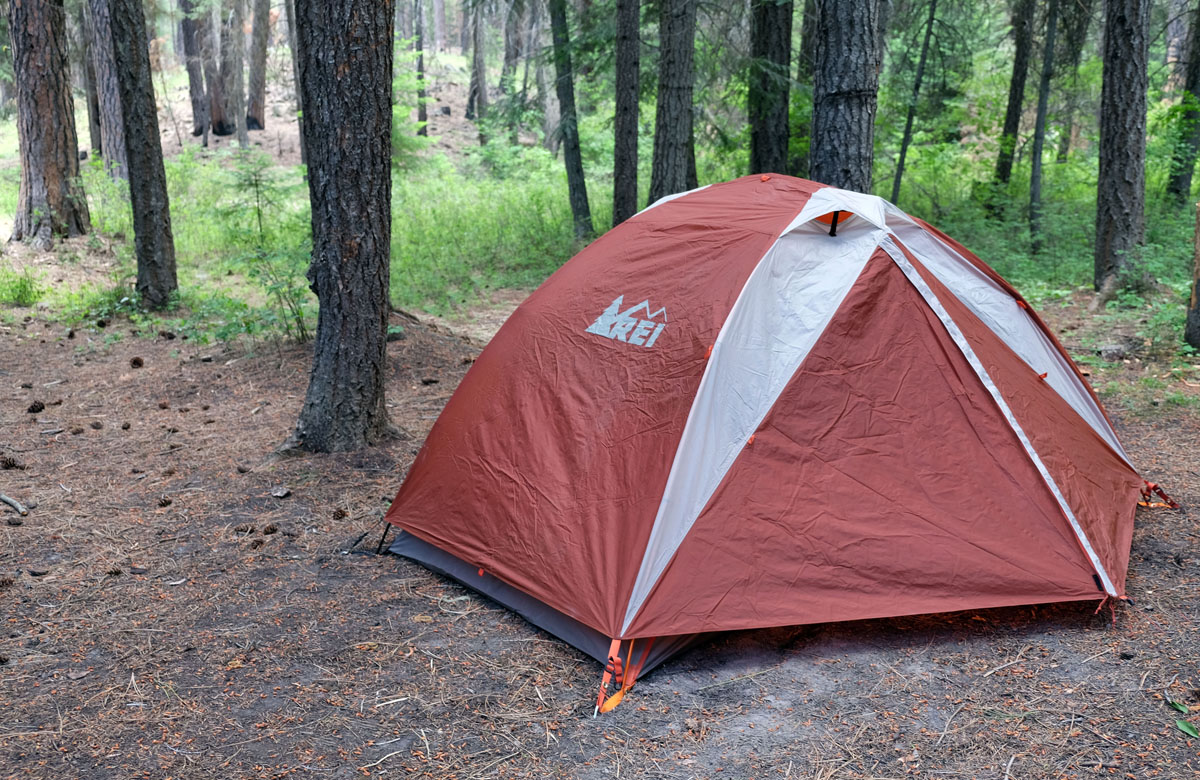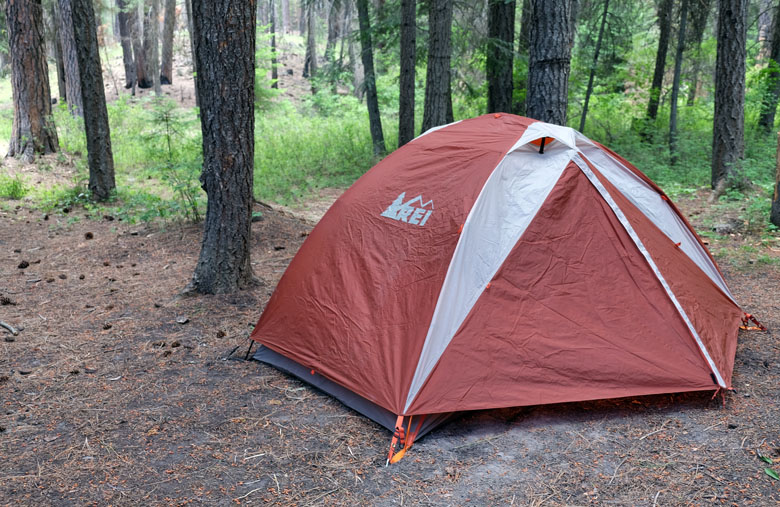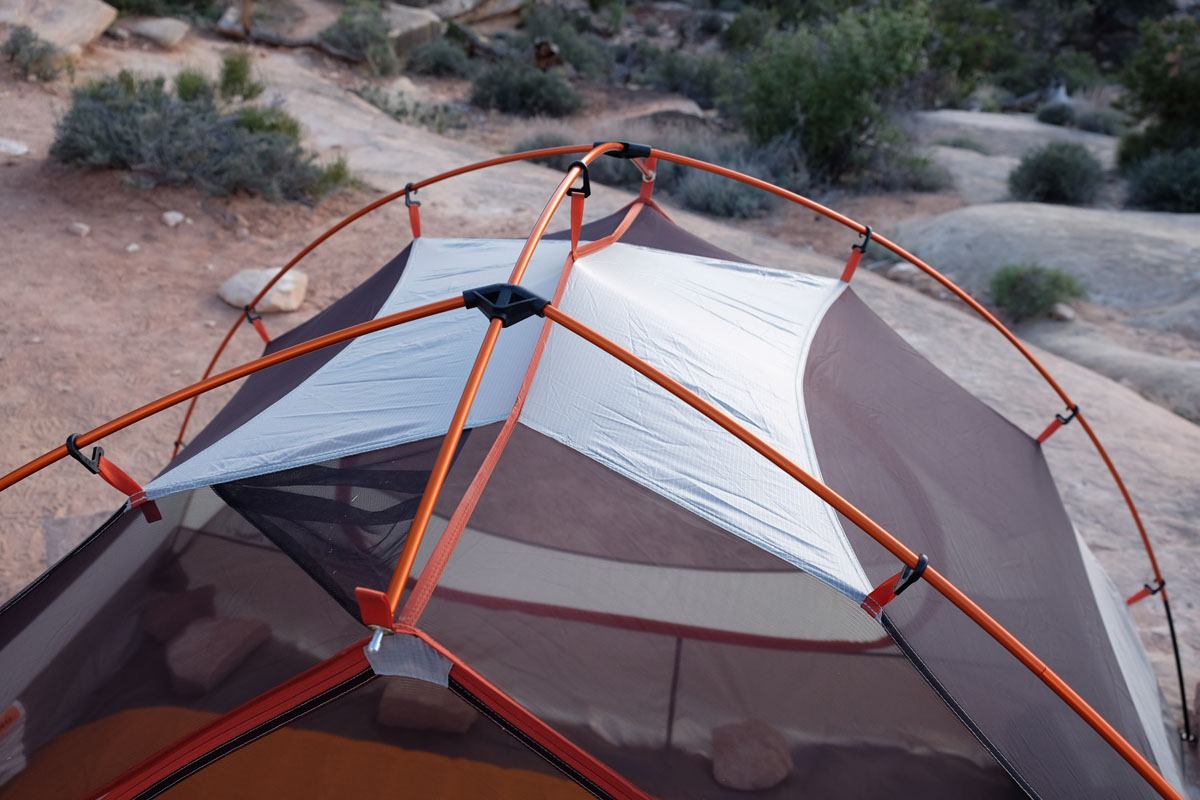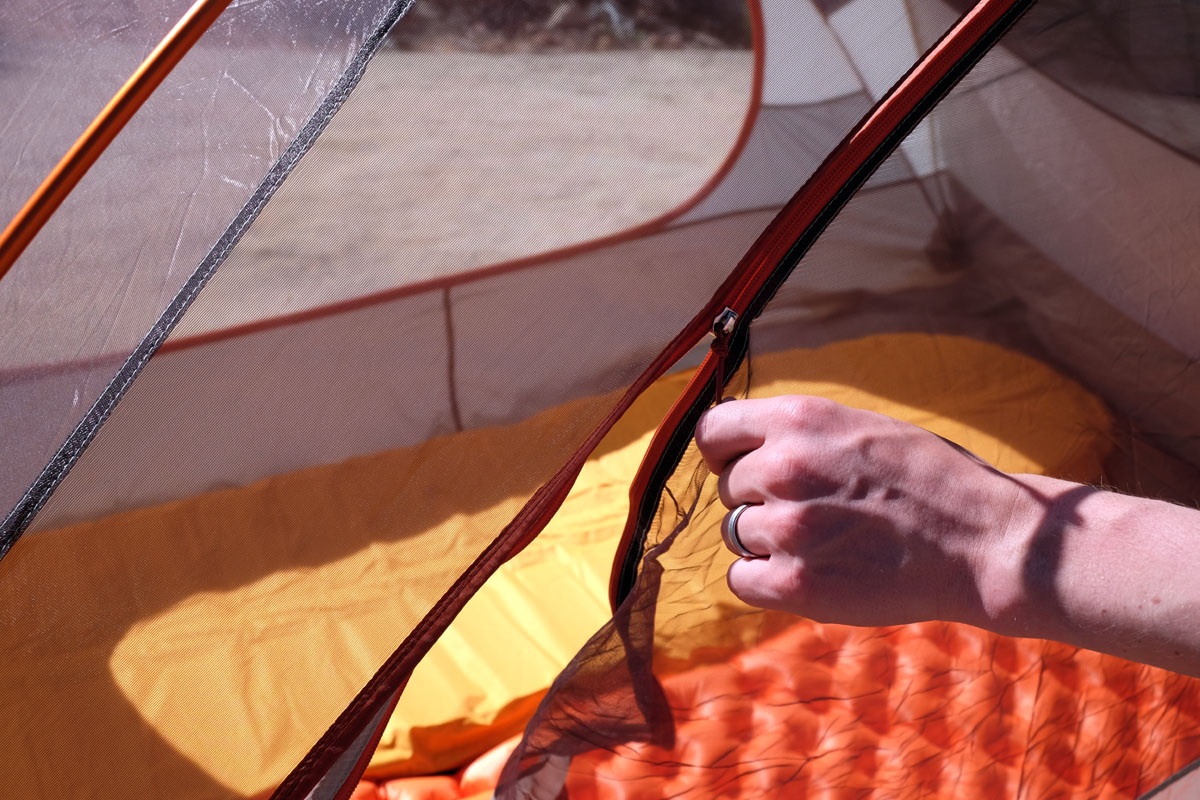

Switchback Travel


Switchback Travel
Well designed and constructed with quality materials that rival tents nearly twice its price, the REI Half Dome 2 is ideal for weekend backpackers and those on a budget. It’s quite spacious on this inside and REI shed nearly a pound of weight for the current version. It all adds up to a tent that is appreciated by comfort-oriented outdoor veterans and first-timers alike. Below we break down the Half Dome's design, weather protection, ventilation, and more. To see how the Half Dome stacks up, check out our comparison table and article on the best backpacking tents.
From the moment you set up the tent, it’s apparent the Half Dome 2 was designed by folks that spend some serious time in the outdoors. They aced both the big design elements and smaller details, like great ventilation and handy mesh pockets throughout the interior. We love the fly design too, which lets you roll back and secure half of the fly for some stargazing. Should the weather turn, it’s as easy as rolling it back down and securing the grommets to the tent poles.
Breaking from the previous model’s 3-piece pole design, the poles on the 2016 version are a single unit. Two hubs combine poles that run lengthwise along each side and a single ridgepole through the center. The design gives the tent its roomy interior as well as a rigid foundation. We do recommend setting up the tent first before taking it on a trip because some users have reported cracks developing near the plastic hubs. It's not something we've experienced over our year-long test period, but is still good to look out for.

Who is this tent best for? It’s a terrific three-season tent for when the conditions aren’t nasty. We’ve used older versions of the REI Half Dome in really tough alpine weather and the structure just wasn’t geared to handle heavy winds and constant rain as well as some pricier tents. The improved pole system does help in this respect, however, and a properly staked and guyed out Half Dome 2 will handle most sub-alpine weather just fine (just don't confuse it with a Hilleberg).
Ventilation is another strong suit, with large swaths of mesh in the upper part of the tent supplemented by 4 rainfly vents that work well even in a rainstorm. As we found out while testing the tent in Utah, the Half Dome 2 is far better in the wind even with the emphasis on air flow than the similarly priced and even more vertical Kelty TN2.

| TENT | PRICE | WEIGHT | PACKED | HEIGHT | FLOOR | Doors |
|---|---|---|---|---|---|---|
| REI Co-op Half Dome 2 | $199 | 4 lbs. 9 oz. | 21 x 6 in. | 40 in. | 31.8 sq. ft. | 2 |
| Kelty TraiLogic TN2 | $250 | 4 lbs. 4 oz. | 14 x 11 x 3 in. | 42 in. | 27.5 sq. ft. | 2 |
| Marmot Limelight 2P | $249 | 5 lbs. 2 oz. | 18 x 7 in. | 43 in. | 33 sq. ft. | 2 |
| REI Co-op Quarter Dome 2 | $349 | 3 lbs. 5 oz. | 18.5 x 7 in. | 42 in. | 28.7 sq. ft. | 2 |
| MSR Hubba Hubba NX | $400 | 3 lbs. 7 oz. | 18 x 6 in. | 39 in. | 29 sq. ft. | 2 |
The Half Dome 2 isn’t ultralight by any means: those who prefer fast and light certainly won’t like the nearly 4 pound 15 ounce total weight. The MSR Hubba Hubba NX is a similar tent in many ways but much lighter, coming in at 3 pounds 13 ounces (packed weight) for the 2-person version. The Big Agnes Copper Spur and Fly Creek drop even more weight but are much thinner, less spacious, and more expensive.
Price is where the Half Dome 2 really sets itself apart. From the tent poles to the tent body and fly fabrics, no competitor in the $200 price range that can match the Half Dome 2 in terms of quality and performance (we would prefer an upgrade on the cheaper aluminum stakes that come with the tent, but at $199 you should have some leftover cash to change those out). The Marmot Limelight comes closest and is even more spacious inside, but weighs significantly more. It’s no coincidence that you often see that familiar REI logo on a backpacking trip in the Pacific Northwest. And with the update (and a spot on our list of best backpacking tents), it’s safe to say those numbers will increase. Maybe that’s why they now offer multiple rain fly colors to choose from—reducing the chance of that awkward matching Half Dome 2 encounter.
Editor’s note: We usually provide a live price comparison table below our outdoor gear reviews, but the Half Dome 2 is sold exclusively by REI. You can see the Half Dome 2 page here and support us in the process. Thanks!